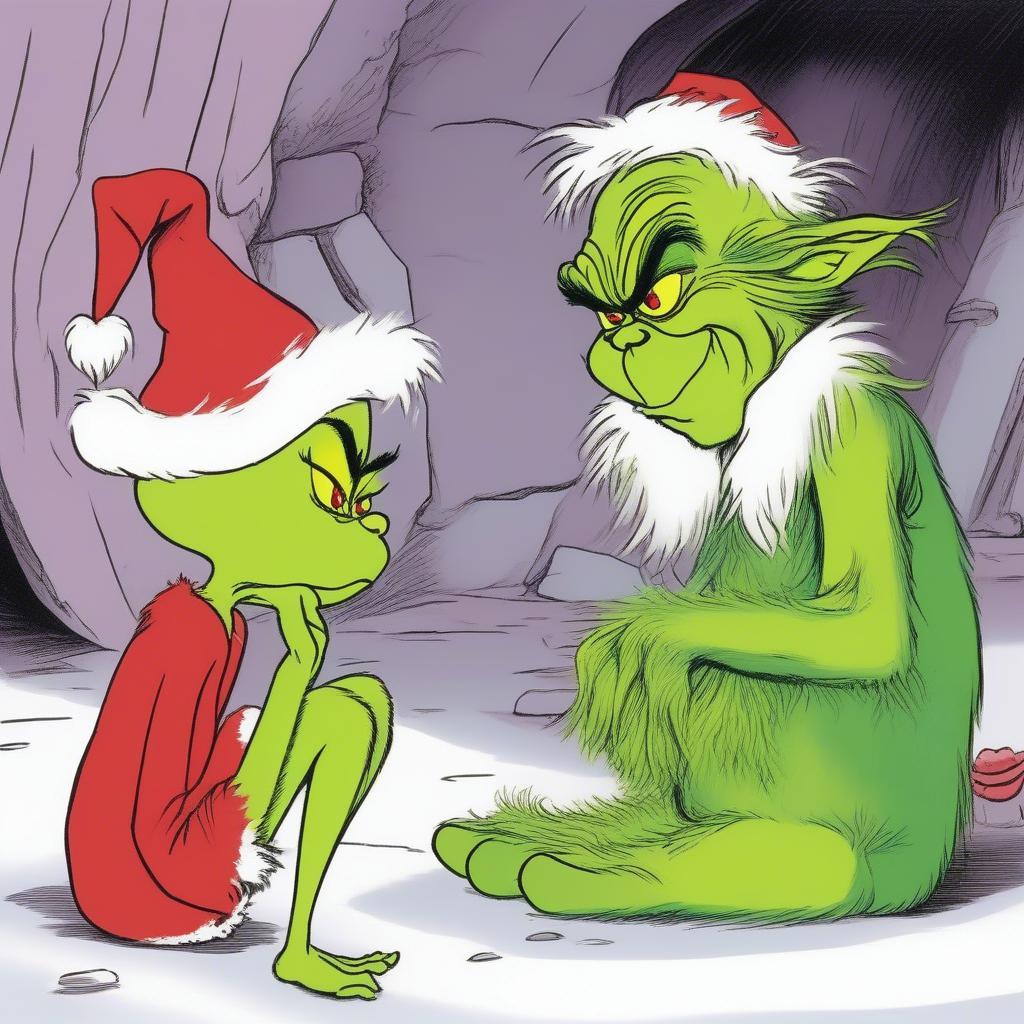
Dr. Seuss’ “How the Grinch Stole Christmas!” is a timeless holiday classic that continues to resonate with audiences of all ages. Originally published in 1957, the story of the grumpy Grinch and his attempt to steal Christmas from Whoville has become a cultural phenomenon, inspiring numerous adaptations, including animated specials, feature films, and stage productions. This article delves into the enduring appeal of Dr. Seuss’ The Grinch Who Stole Christmas, exploring its themes, characters, and lasting impact on popular culture.
Table Content:
The Grinch’s Grumpy Genesis: Exploring the Character’s Origins
The Grinch, a green, furry creature with a heart “two sizes too small,” resides in a cave on Mount Crumpit, overlooking Whoville. His misanthropic nature and hatred for Christmas are central to the story. But why is the Grinch so grumpy? Dr. Seuss offers subtle hints throughout the narrative, suggesting a possible backstory of loneliness and social isolation. While not explicitly stated, the text implies that the Grinch may have been ostracized for his appearance and demeanor, leading to his resentment of the Whos and their joyous celebrations. His cynicism might stem from a childhood devoid of the warmth and inclusivity he witnesses in Whoville. This ambiguity allows readers to interpret the Grinch’s motivations, adding depth to his character. He’s not simply a villain; he’s a complex figure whose grumpiness masks a deeper emotional wound.
The Whos Down in Whoville: A Celebration of Community and Kindness
In stark contrast to the Grinch’s solitude, the Whos are depicted as a warm, welcoming community who embrace the spirit of Christmas with unwavering enthusiasm. Their joy is not dependent on material possessions but on togetherness and the simple pleasures of the season. The Whos’ unwavering festive spirit, even in the face of the Grinch’s actions, highlights the true meaning of Christmas: love, generosity, and connection. Little Cindy Lou Who, with her innocent questions and genuine kindness, embodies the spirit of compassion that ultimately touches the Grinch’s heart. She represents the power of empathy to bridge divides and transform even the most hardened cynic.
 The Grinch and Cindy Lou Who in a pivotal scene
The Grinch and Cindy Lou Who in a pivotal scene
Stealing Christmas: More Than Just Presents
The Grinch’s elaborate plan to steal Christmas involves disguising himself as Santa Claus and raiding Whoville, taking everything from presents and food to Christmas trees and decorations. However, his actions ultimately serve to underscore the true meaning of the holiday. When the Whos gather on Christmas morning, despite the absence of their material possessions, they sing joyfully, demonstrating that Christmas is not about tangible gifts but about the spirit of togetherness and love. This pivotal moment reveals the hollowness of the Grinch’s attempt to extinguish the holiday spirit. It reinforces the message that true joy resides in shared experiences and human connection, not in material wealth.
The Grinch’s Redemption: A Heart Grows Three Sizes
The culmination of the story sees the Grinch’s heart grow “three sizes” as he witnesses the Whos’ unwavering joy. This transformation signifies a profound shift in his perspective and a newfound understanding of the true meaning of Christmas. He returns the stolen goods and joins the Whos for their Christmas feast, symbolizing his integration into the community and his embrace of love and forgiveness. [the grinch who stole] explores themes of redemption and the transformative power of kindness.
 The Grinch Carving the Roast Beast
The Grinch Carving the Roast Beast
The Enduring Legacy of Dr. Seuss’ The Grinch
“How the Grinch Stole Christmas!” has become a cultural touchstone, its message of redemption and the importance of community resonating across generations. The story’s enduring popularity is a testament to its timeless themes and the relatable struggles of its characters. From animated specials to feature films, the Grinch’s story continues to be retold and reinterpreted, solidifying its place in popular culture. [grinch cindy who] remains a beloved character, representing the potential for change and the triumph of the human spirit. The story’s simple yet profound message of love and forgiveness continues to inspire audiences worldwide, making it a cherished part of the holiday season. [the grinch who stole christmas full movie] has become a holiday tradition for many families. [cindy loo who] is an inspirational character for children.
FAQ
- What is the main message of “How the Grinch Stole Christmas!”? The story emphasizes the true meaning of Christmas, highlighting the importance of love, compassion, and community over material possessions.
- Why does the Grinch hate Christmas? The reasons for the Grinch’s hatred are not explicitly stated but are implied to stem from loneliness, social isolation, and possibly a difficult past.
- Who is Cindy Lou Who? Cindy Lou Who is a young Who who encounters the Grinch during his attempt to steal Christmas. Her innocence and kindness play a crucial role in the Grinch’s transformation.
- What happens to the Grinch at the end of the story? The Grinch’s heart grows three sizes, and he joins the Whos for their Christmas feast, symbolizing his redemption and acceptance into the community.
- Why is “How the Grinch Stole Christmas!” so popular? The story’s timeless themes of redemption, forgiveness, and the importance of community continue to resonate with audiences of all ages. [the girl who sign where are you christmas] is another popular Christmas story.
The Grinch’s journey from bitterness to joy serves as a reminder that even the most hardened hearts can be touched by kindness and the spirit of giving. Dr. Seuss’ masterpiece continues to inspire generations with its message of hope and redemption, making it a cherished holiday tradition for families around the world.